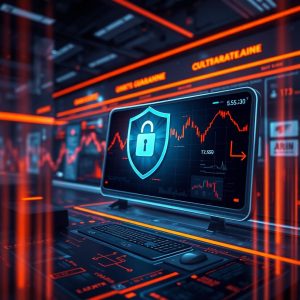The Importance of Two-Factor Authentication for Cryptocurrency Wallets

Cryptocurrencies are becoming increasingly popular as methods of investment and transaction, but this growth also brings notable security risks. The main threat in the digital space is cyberattacks aimed at stealing funds. One effective way to protect cryptocurrency wallets is through two-factor authentication (2FA).
2FA is a security measure that requires users to verify their identity in two steps before gaining access to a system or service. In the case of cryptocurrency wallets, 2FA ensures that it is indeed the owner attempting to log in or initiate a transaction.
Crypto wallets are appealing targets for hackers due to the anonymity and irreversibility of transactions. Unlike traditional banking systems—where transactions can often be reversed or refunded—once cryptocurrency has been transferred to another address, recovering those funds is nearly impossible. That’s why safeguarding against unauthorised access is of utmost importance.
A simple password alone isn’t always enough to security-guard a wallet. Cybercriminals can deploy phishing, breach databases, or use password-cracking tools to break in. In these situations, two-factor authentication acts as an additional barrier that significantly reduces the risk of hacking, since an attacker would need both the password and the second factor—such as a mobile device or hardware key—to succeed.
Phishing remains one of the most common and accessible ways for hackers to gain unauthorised access. Even if a victim falls for a phishing scam and shares their password, the attacker can’t access the wallet without the second authentication factor.
Losing the device that generates 2FA codes or the access key can complicate regaining access to the wallet. That’s why it’s essential to always have backup recovery options or backup codes readily available.
SMS-based authentication methods are more vulnerable, as they are susceptible to SIM swapping attacks—where criminals hijack the victim’s phone number. As a result, many prefer using authentication apps or hardware keys instead of relying on SMS.
Two-factor authentication has become a vital part of securing cryptocurrency wallets, providing an extra layer of protection for digital assets. As cyberattacks and phishing tactics evolve, 2FA remains a simple yet effective way for anyone to safeguard their investments.
Biometric data, such as fingerprints or facial recognition, can further enhance the security of virtual assets. In the coming years, these methods may become even more reliable and user-friendly, thanks to advances in machine learning and sensor technology. For example, improved facial recognition and iris scanning could achieve near-perfect accuracy in verifying identities.
Category news: Security and Education
-

Trading bot with market forecasting
Trading bot with market forecasting capabilities is far more than just an algorithm that follows preset rules. It employs machine learning techniques, neural networks, statistical modelling, and historical market data to build probabilistic models of price behaviour. Such a bot can “learn” from past market situations and make decisions based not only on current data […]
-

Trading bot for beginners
In the world of finance, an increasing number of people are eager to try their hand at trading. Some are attracted by the prospect of making money, while others are drawn by curiosity about the markets and strategies. However, a beginner who first opens a chart filled with lines and candles can quickly become overwhelmed. […]
-

Trading bot with training
A trading bot is a software programme that automates the trading of assets (stocks, cryptocurrencies, futures, etc.). Self-learning bots are capable of analysing data, identifying patterns, and adjusting their strategies based on experience. Unlike traditional algorithmic bots, they don’t follow strictly predefined rules; instead, they can modify their behaviour according to new information. Data collection […]
-

Trading bot with a security guarantee
In today’s digital world, trading is evolving at a rapid pace, and automation has become a crucial part of a successful strategy. Trading bots are software programs that help traders respond more quickly to market changes, minimise potential risks, and increase profits. However, when choosing such an assistant, it’s essential to consider not only the […]
Latest news
-

Bot for trading goods
In an era of rapidly advancing digital technology, businesses are increasingly turning to automated solutions that simplify and accelerate workflows. One such solution is trading bots – programs capable of replacing or complementing human labor in the sales process. Their integration into product trading offers a number of substantial advantages that significantly enhance business efficiency. […]
-

SHIB
SHIB, or Shiba Inu, is a cryptocurrency that emerged in 2020, inspired by the popular meme coin Dogecoin. It quickly caught the attention of the crypto community thanks to its extremely low price per token and a marketing strategy centered around social media and fan engagement. Although SHIB was initially conceived as a “joke,” its […]
-

Real-Time Trading Bot
Real-time trading bots connect directly to trading platforms via API. They receive up-to-the-second data on prices, volumes, supply and demand, and use predefined algorithms to execute trades. These algorithms can be simple – for example, buying when the price drops and selling when it rises – or highly sophisticated, incorporating technical analysis, artificial intelligence, or […]
-

ETF Trading Bot
Thanks to rapid technological development, investing is gradually shifting from a domain reserved for professionals to an area of widespread public interest. Exchange-traded funds (ETFs), in particular, have grown extremely popular, offering diversification, transparency, and ease of purchase. Against this backdrop, a new tool is emerging – an ETF trading bot. ETF funds, or exchange-traded […]

